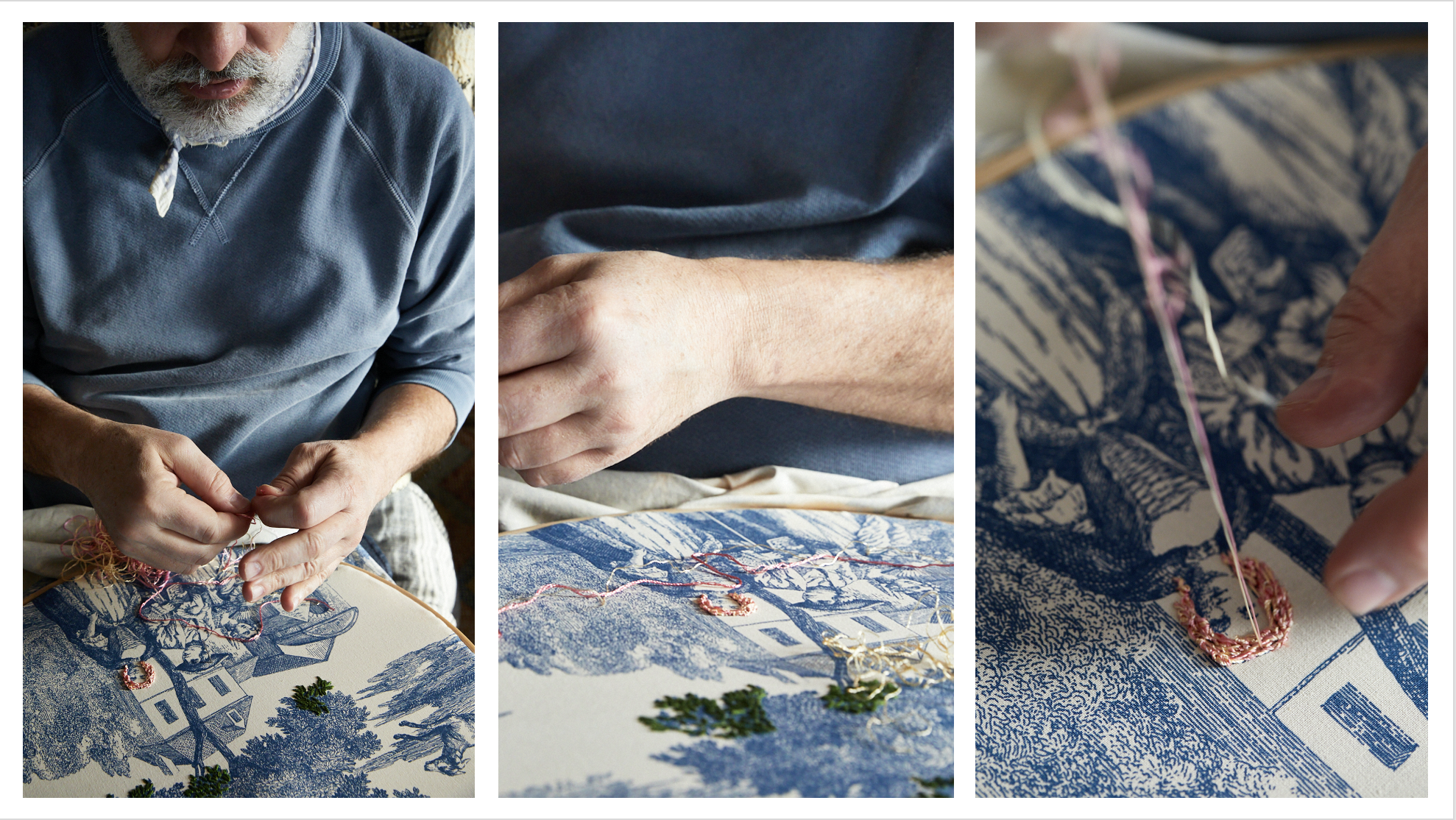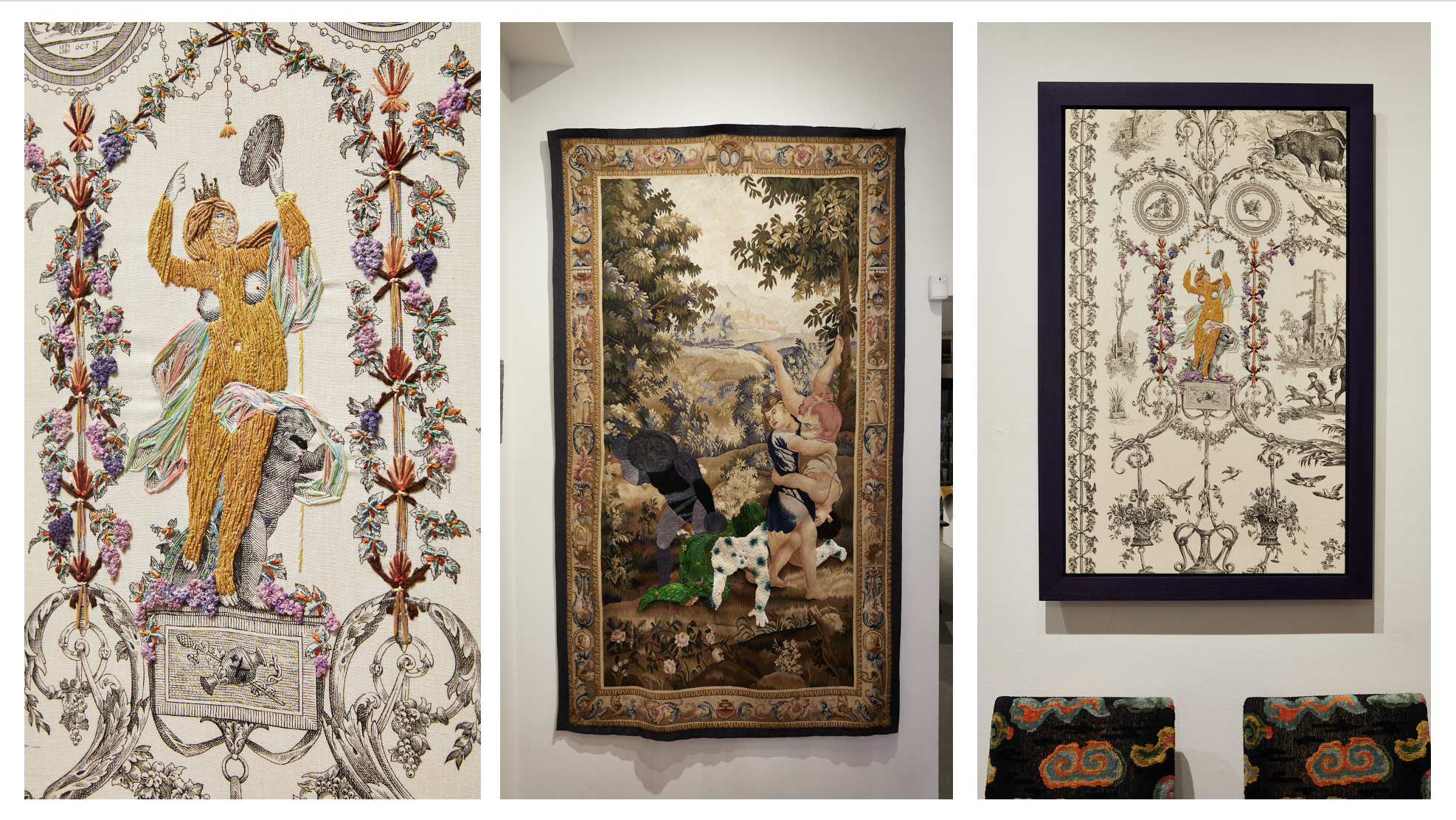Textile artist Richard Saja has found a way to retain a child-like sense of wonder. He’s the kind of grownup who doesn’t always use the green crayon for leaves or the blue one for the sky.
Saja is the founder of Historically Inaccurate, a blog about his decorative, graphic, and fine art work. At his home studio in Catskill, New York, his projects often begin with Toile de Jouy. This fabric is printed cloth from Jouy-en-Josas, a town near Versailles. He uses the (usually) monochromatic pastoral scenes as a coloring book, and racks of brightly-colored yarn as his crayons. “I’m completely self-taught, and my skills have evolved–and gotten better–over time. I really enjoy the process of stitching, the process of discovery.”
Richard Saja on Coloring Outside the Lines

Instead of employing expected colorways, Saja uses bright or even glow-in-the-dark examples to embellish and augment. When setting out on a project, he dips into his massive archive of prints, selecting whatever interests him at the time. “It seems like an inexhaustible supply right now so I have many, many choices––and that is appealing to me.”

For his next move, Saja is planning a show at the Toile de Jouy Museum at some point in the future. A recently completed project for the W Hotel in Philadelphia, due to open soon, included a toile pattern of his own design, one that was eventually made into duvet covers and other furnishings.

These days, Saja stitches more on tapestries than on toile. “Working on tapestry is more knot-making than delicate stitching. I use a giant hoop to stretch the work surface and it’s more physical as well.” Anya Hindmarch hired him to produce wool tapestries for her flagship US store, where they hang as decorative elements.

For Richard Saja’s midday studio lunch, he shared his Pad Krapow Gai recipe with us.
Story by Stephen Treffinger
Photography courtesy of Richard Saja
Subscribe to TABLE Magazine’s print edition.
